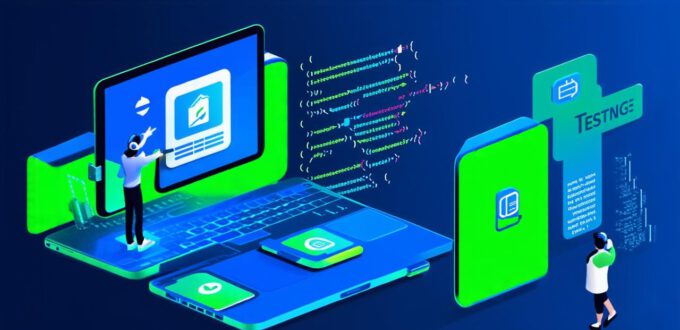Introduction:
In today’s fast-paced world, developing an app that can keep up with the ever-changing technology landscape is a challenging task. However, it doesn’t have to be that way. With the right approach and guidance, you can navigate the app development process efficiently and create a successful product that meets the needs of your target audience. In this article, we will provide you with a step-by-step guide on how to do just that.
Step 1: Define Your Project Scope
The first step in the app development process is defining your project scope. This involves identifying the goals and objectives of your app, as well as the target audience. You should also consider any technical constraints or limitations, such as platform compatibility or hardware requirements. By defining your project scope early on, you will have a clear understanding of what you hope to achieve and how to go about achieving it.
Case Study: The Uber App
Uber is an excellent example of a successful app that was developed with a well-defined project scope. When the company first started out, they identified a need for a ride-sharing service in the San Francisco Bay Area. They defined their project scope by identifying their target audience (tech-savvy commuters), their goals (providing an affordable and convenient transportation option), and their technical constraints (iOS and Android platform compatibility). By focusing on these key factors, Uber was able to create a successful product that has since expanded to become a global phenomenon.
Step 2: Create a Project Plan
Once you have defined your project scope, the next step is to create a project plan. This involves breaking down the app development process into smaller, more manageable tasks and establishing timelines for each task. You should also identify any dependencies or risks that may impact the project’s success and develop contingency plans to address them. By creating a well-structured project plan, you will be able to stay on track and ensure that your app is delivered on time and within budget.
Case Study: Airbnb App
Airbnb is another great example of a successful app that was developed with a comprehensive project plan. When the company first started out, they identified a need for a platform that would allow people to rent their homes or apartments to travelers. They defined their project scope by identifying their target audience (budget-conscious travelers), their goals (providing an affordable and unique accommodation option), and their technical constraints (iOS and Android platform compatibility). They then created a detailed project plan that broke down the app development process into smaller tasks, such as creating user profiles, designing the user interface, and integrating payment processing. By focusing on these key tasks and establishing clear timelines, Airbnb was able to create a successful product that has since become one of the world’s most popular vacation rental platforms.
Step 3: Develop a Minimum Viable Product (MVP)
Before investing too much time and resources into your app development project, it is important to develop a minimum viable product (MVP). This involves creating a basic version of your app that includes only the essential features and functionalities. The goal of an MVP is to test the market and gather feedback from early adopters, which can then be used to refine and improve the app. By developing an MVP first, you will be able to save time and resources while also ensuring that your final product meets the needs of your target audience.
Case Study: Instagram App
Instagram is a great example of how an MVP can help guide the app development process. When the company first started out, they developed an MVP that included only basic photo-sharing features. They then released the app to a small group of users and gathered feedback on how they could improve it. Based on this feedback, Instagram refined their app and added new features such as filters, captions, and user profiles. By focusing on developing an MVP first, Instagram was able to create a successful product that has since become one of the world’s most popular social media platforms.
Step 4: Test and Iterate
Once you have developed your MVP, it is important to test it thoroughly and gather feedback from users. This will help you identify any bugs or issues with the app and make improvements based on user feedback. You should also continue to iterate on your app by adding new features and functionalities as needed. By testing and iterating continuously, you will be able to create a product that meets the evolving needs of your target audience.
Case Study: Dropbox App
Dropbox is an excellent example of how continuous testing and iteration can improve an app over time. When the company first started out, they developed an MVP that included only basic file-sharing features. They then released the app to a small group of users and gathered feedback on how they could improve it. Based on this feedback, Dropbox added new features such as version control, collaboration tools, and integration with other apps. By continuously testing and iterating on their app, Dropbox was able to create a successful product that has since become one of the world’s most popular cloud storage solutions.
Step 5: Launch and Market Your App
Once you have developed and tested your app, it is time to launch it to the public. This involves creating a marketing strategy that will help you reach your target audience and promote your app. You should also consider any legal or regulatory requirements that may impact the launch of your app, such as obtaining necessary permits or complying with data privacy laws. By launching your app effectively, you will be able to attract a large number of users and generate revenue through in-app purchases or advertising.
Case Study: Candy Crush Saga App
<p
